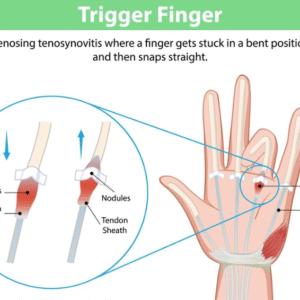From medical malpractice lawsuits to increasing hospital-acquired infections – there are several reasons why healthcare executives must improve their industry know-how. Despite technological advancements in medical science, these challenges affect the efficiency of our healthcare leaders. Though governments have implemented strategies to address these problems, the burden to bring change now lies on health leaders.
The healthcare workforce and patients expect healthcare executives to make care delivery quicker, cost-effective, and most productive. So, which challenges are healthcare leaders experiencing today? Let’s find out about these problems and possible methods to eliminate them.
Challenges encountered by healthcare leaders
Statistics published last year showed that the USA invested over 17% of its GDP on health services. Thus, American healthcare expenditures accounted for $3.8 trillion in 2019, whereas the workforce expected to retire will create almost four million employment opportunities for millennials. Managing these vacancies will itself become another challenge for the already disturbed health sector.
Given the changing technology, political upheavals, and trending globalization, we need more nurses and doctors to don the hats of leadership. If you seek to enter this field as an executive nurse or doctor, it’s imperative to acquire the necessary skills. These skills include communication, emotional intelligence, conflict resolution, and mentoring your subordinates.
So, how does becoming a nurse leader or other healthcare executive help you improve this sector? Mastering leadership skills in nursing allows you to steer your healthcare facility towards unprecedented growth and rescue it from the clutches of prevailing healthcare issues. You can reduce burnout among RNs and empower patients to influence health-related decisions.
As the pandemic persists, the American health sector requires more nurses to advance their education and get promoted to executive positions. Likewise, as obesity becomes an epidemic and people are living longer today, only skilled physicians and RNs can effectively eliminate challenges harming the national well-being. So, we must discuss some problems faced by healthcare executives that need an immediate resolution before they turn into irreversible issues:
Long-term care
In July, Reuters revealed that 54 million Americans are aged 65+, and this population will reach 74 million by 2030. Also, the number of people aged 85+ is growing speedily. So, more patients needing long-term treatment will emerge in the future. Almost one-fourth of the population will reach 65+ in 2060. Therefore, health leaders must prepare themselves to provide continuing treatment to such patients. Its solution lies in hiring more qualified RNs to draft healthcare policies and help their seniors.
Retiring nurses
Unfortunately, many nurses will retire in the future, thereby compelling health leaders to accelerate their efforts to fill these gaps. A 2018 survey shows that over 47% of RNs are aged 50+, whereas COVID-19 has already heightened the requirement to hire more nurses. Health leaders must promote or sponsor continued education among their subordinates. It’s more cost-effective to upskill/reskill employees than recruiting new ones. It will thus increase the number of qualified workers in your workforce.
Mental problems
During the pandemic, burnout became prevalent among nurses. A report suggests that over 31% of nurses quitting in 2018 left because of burnout. Healthcare executives – therefore – can implement strategies to reduce burnout and promote mental well-being among RNs. Nurses should maintain a healthy work-life balance and avoid overworking themselves. They must also engage in pastimes for better mental health. That’s how RNs ensure they’re mentally capable of performing their duties.
Inadequate funding
Many northeastern healthcare institutions suffer from inadequate funding. Some experts blame the Affordable Healthcare Act for why medical centers don’t have the funds to operate smoothly. Health leaders serve as advocates as well, so they can demand the government to increase their funding. A recent example involves how nurses successfully protested outside the White House for the right of nurses to have proper PPE for handling COVID patients.
Medical errors
Research published by John Hopkins revealed that medical mistakes made by doctors/nurses caused over 250,000 fatalities annually in the United States. Similarly, recent statistics show that 15-19 thousand medical malpractices are filed by patients or their relatives every year. So, health leaders must reduce these errors and make medical services more precise to save people’s lives.
It’s possible to make healthcare more effective by ensuring adequate staffing, limiting overtime, using evidence-based practices, and – most importantly – communicating correctly with colleagues. Thus, we expect healthcare executives to implement these protocols to diminish medical errors.
No transparency
Patients often find themselves stuck miserably in a tug-of-war between primary caregivers and their insurance providers. Caregivers attempt to “upcode” a patient’s treatment by pretending to perform procedures more expensive than they performed. On the other hand, insurance providers want to charge higher premiums, making expensive treatments a fantasy for patients.
Thus, health leaders should improve communication between patients, physicians, and providers to ensure effective collaboration. It’ll help them control pricing and regulate health outcomes in their patients’ favor. Achieving transparency has become a vital goal in the healthcare industry.
Weak cybersecurity
Many hackers targeted the health sector during the ongoing pandemic. Statistics from August show that healthcare facilities’ business transactions accounted for 43% of breaches by criminals in 2021. It has become a significant challenge to address cybersecurity complications for health leaders. With digital patient records and online payment systems, the healthcare industry seems more vulnerable to cyberattacks now. Therefore, leaders can’t tolerate losing their patients’ sensitive information.
The solution involves managers spreading cyber-awareness by implementing procedures to reduce the incidents of data leakages/breaches. It is crucial to hire cybersecurity professionals while creating backups to protect your data. We also expect leaders to implement strategies to deal with violations and utilize cybersecurity applications to detect vulnerabilities in their systems. That’s how you outsmart criminals and keep them at bay.
Expensive treatments
It’s no secret that health services are not affordable in the United States. Unlike Europe, where they have universal healthcare, two-thirds of Americans believe they can’t afford medical services in the country. Similarly, studies from 2020 revealed that one-fourth of American patients skipped getting healthcare facilities solely because they couldn’t afford the costs. So, healthcare executives should find ways to mitigate rising health expenses to enable more patients to seek the care they deserve.
Moreover, healthcare managers should collaborate with their patients and insurance providers to resolve this problem. Using telehealth and telemedicine will also diminish the expenses of commute for patients. These strategies will enable citizens effectively to seek the services they direly require, thereby improving the collective well-being of this nation.
Conclusion
People’s perception of the American health sector hasn’t evolved since the ‘90s. A study shows that just 7% of the masses are satisfied with the health services they receive. In contrast, according to Gallup, 70% of Americans believe that the country’s healthcare is in a “state of crisis.” Healthcare executives will probably agree with them since they experience several challenges that have undermined the efficacy of the healthcare leaders.
Some of these problems that require quick solutions are medical negligence, expensive healthcare, shortage of nurses/doctors, inadequate medical facilities, and no insurance coverage. So, addressing all these problems will enable health leaders to improve care delivery to their patients for optimal results.






